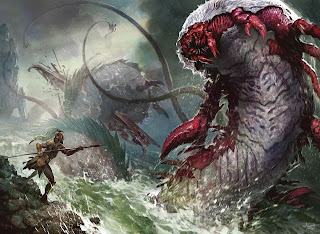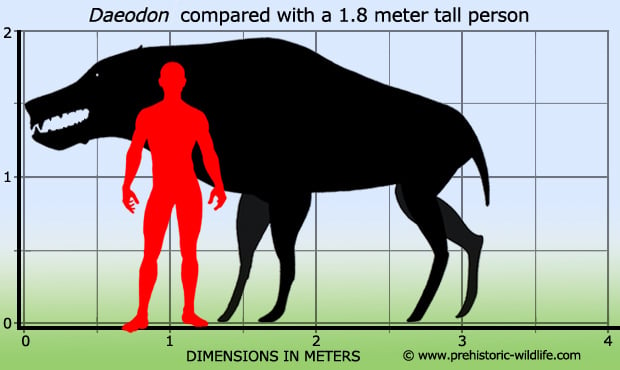Warlord (vol. 2) #6 (June 1992)
Written by Mike Grell; Art by Dameon Willich and Tim Burgard
Synopsis: The army of Shamballah, led by the Warlord, is at the walls of Thera. They’re soon taking heavy casualties from Deimos’s undead hordes—and every time one of the Shamballans falls, they rise to fight for the other side!
Deimos, in his statue form, strides forth into battle. He unhorses Petrus and grabs him. Morgan shoots Deimos, but the bullet ricochets off. He can only watch in horror as:
The old veteran is dead.
Realizing there’s no way they can win, Tara orders a retreat. In their camp they notice that the land around them is dying as Deimos’s power rises. A column of troops arriving at the camp raises their spirits a bit: It’s the combined armies of Kiro and Kaambuka, led by Machiste, Mariah, and Ashir.
Morgan greets his old friends warmly, but tells them there’s nothing they can do. His army of thousands was winnowed down to a handful. Everyone expects him to do something, but he doesn’t want to lead more people to pointless deaths. Morgan leaves the tent, but Tinder follows him. “You can’t turn these people away,” the minstrel says. “They came for you.”
Morgan walks off alone. As he stands brooding, Jennifer appears. She tells him there is a way to defeat Deimos, but he has to be willing to sacrifice himself. For a daughter, she speaks a bit unkindly, telling him “it ought to be an easy choice” and since he’s never been one for hearth and home “surely it will be no loss.” Morgan says he’ll do whatever must be done.
Later, when he tells the others, Mariah and Tara protest, but he convinces them it’s the only way. Tinder is sent as a messenger to Deimos, who agrees to meet Morgan at the appointed place.
Morgan and his troops arrive at the place beside a lake looking defeated. When Morgan presents himself, Deimos gloats that the weakness of mortals—their fear of death—makes them eager to surrender Morgan, even as before they had been eager to follow him.
Morgan dives into the lake. Enraged, Deimos orders his troops to slaughter Morgan’s friends, but before they can act:
The battle is rejoined, but this time the outcome is different. Morgan buries the hellfire blade in Deimos’s chest:
Deimos’s troops quickly decay to dust. Our heroes are victorious.
Sometime later, Tinder is playing his lute in a garden, when Queen Tara approaches. Tinder says he came looking for Warlord the legend and found the man—but now with the nations united under one banner, everything Morgan spoke of can become a reality. The promise of the legend can be fulfilled.
“I think not, “ Tara replies. “He has already left.”
Tinder smashes his lute in disappointment.
Things to Notice:
- All the characters are wearing more armor than they used to wear.
- Ashir returns to the Warlord saga for the first time in about 7 years (issue #96).
Where It Comes From:
And so the limited series ends the way everyone but Tinder seems to know it would with Morgan running out on responsibility once again.
The use of the hellfire sword here suggests again that Grell may be ignoring events in the original title after he left, but as before it's inconclusive. Worried about the effect that wielding the hellfire sword was having on him, Morgan tossed it into a lake(apparently the lake in this issue) back in issue #43. That was the last we saw of it until the Cary Burkett penned Warlord Annual #4. There, Morgan is forced to reclaim it from the Lady of Lake in order to use it against the Evil One.
Jennifer is last seen with the sword at the end of that story so we don't know what became of it. Perhaps, she tossed it back into the lake at some point? If so, Morgan had a lot easier time regaining the sword this time around than he did when he was forced to fight the King of the Undead in annual #4.
And so the limited series ends the way everyone but Tinder seems to know it would with Morgan running out on responsibility once again.
The use of the hellfire sword here suggests again that Grell may be ignoring events in the original title after he left, but as before it's inconclusive. Worried about the effect that wielding the hellfire sword was having on him, Morgan tossed it into a lake(apparently the lake in this issue) back in issue #43. That was the last we saw of it until the Cary Burkett penned Warlord Annual #4. There, Morgan is forced to reclaim it from the Lady of Lake in order to use it against the Evil One.
Jennifer is last seen with the sword at the end of that story so we don't know what became of it. Perhaps, she tossed it back into the lake at some point? If so, Morgan had a lot easier time regaining the sword this time around than he did when he was forced to fight the King of the Undead in annual #4.



























































